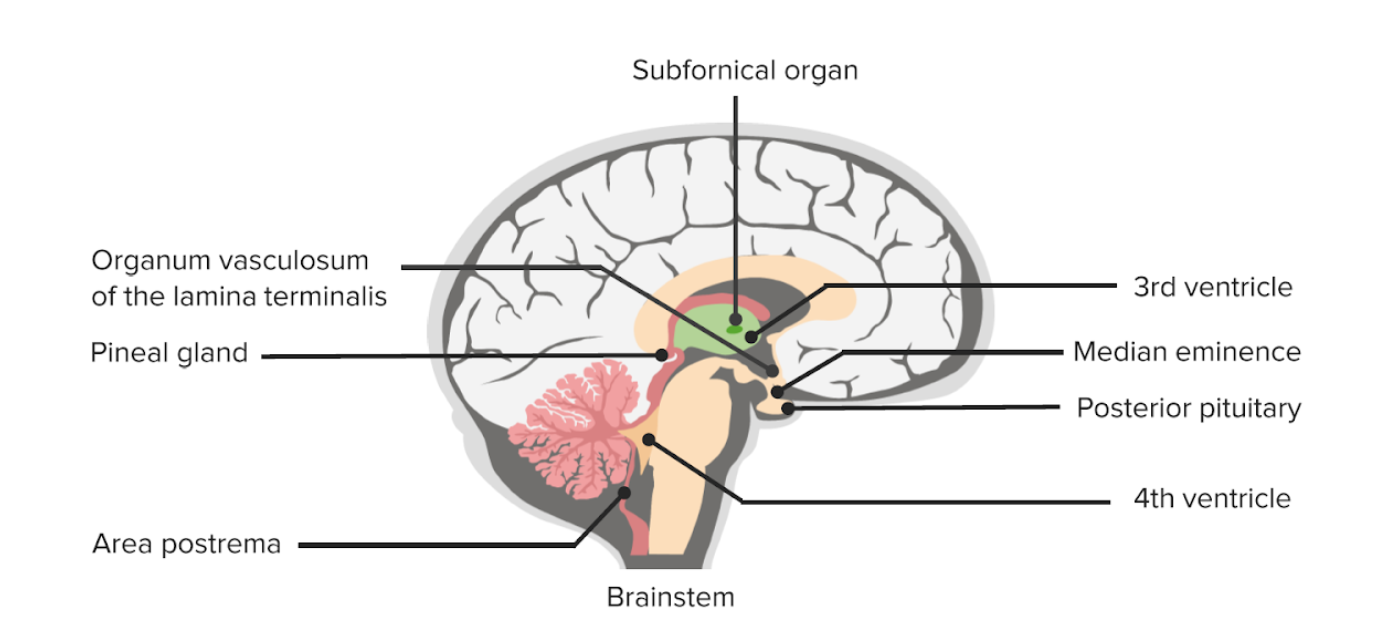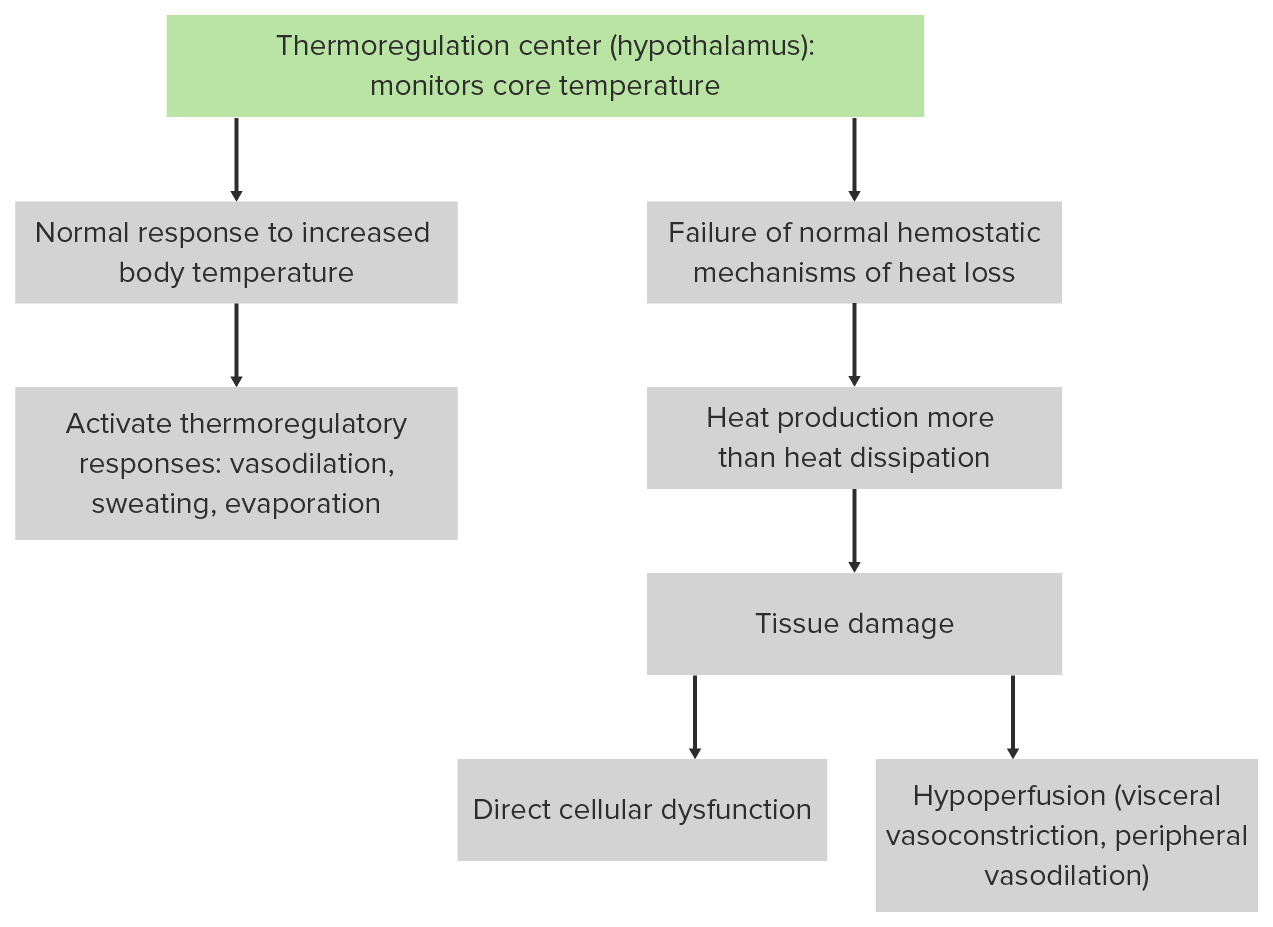Playlist
Show Playlist
Hide Playlist
Hyperthermia (Heat Stroke): Causes & Symptoms
-
Slides 06 BodyTemperatureRegulation GeneralPhysiology.pdf
-
Download Lecture Overview
00:00 So what are the some other ways you can increase body temperature not through a fever mechanism? The easiest one to think about is hyperthermia, which can occur during heat stroke. 00:11 And heat stroke is usually denoted between exertional heat stroke such as, if as persons is exercising and then collapsed, versus nonexertional heat stroke such as, if a person was stranded in a desert, or having unable to move very much and response to a high heat stress. 00:34 There are also types of drug-induced hyperthermia. These usually encompass taking in a substance that increases your metabolic rate, such as amphetamines, or can even occur with things like cocaine. 00:48 There are other malignant syndromes, and these usually involve drug different changes, and usually with things like anti-psychotic drugs can induced some malignant syndrome. 01:02 Serotonin syndrome is also usually drug induced through a serotonin reuptake inhibitors. 01:08 You have things like malignant hyperthermia, and these usually occurs in response to an anesthetic that has given during surgery. And finally, there are some endocrine changes in the body, such as increases in thyroid hormones that can cause hyperthermia. So, if someone has a overactive thyroid gland and produces too much T3 and T4, you can increase body temperature and become hyperthermic. 01:38 Finally, one of the ways you cause hyperthermia is through central nervous system damage or a stroke, especially if that area affects the preoptic anterior hypothalamus or one of the temperature regulatory areas. 01:53 Now, finally, we’re gonna go through some of the ways and which body temperature normally changes. 01:59 And the reason why we need to go through normal body temperature changes is so you understand how fever can affect body temperature. So during a normal day, fever usually fluctuates about a half a degree centigrade. So that means, in the early morning your temperature is very low, maybe around 36,5. Late afternoon, it’s gonna be higher, maybe 37,5. If you go to look at other temperature rhythms at the body undergoes, they’re usually is a temperature change across the menstrual cycle. 02:32 It’s usually low in the follicular phase and higher in the luteal phase. 02:37 And that change can be around 0,3 degrees centigrade. 02:41 So you have some normal fluctuations in temperature that do occur. Both in daily and across a month for a women in their reproductive years.
About the Lecture
The lecture Hyperthermia (Heat Stroke): Causes & Symptoms by Thad Wilson, PhD is from the course Body Temperature Regulation. It contains the following chapters:
- Hyperthermia
- Temperature Rhythms
Included Quiz Questions
An increase in T3 and T4 is associated with hyperthermia of which cause?
- Endocrinopathy
- Serotonin syndrome
- Malignant hyperthermia
- Exertional hyperthermia
- Drug-induced hyperthermia
Which of the following statements is CORRECT regarding basal body temperature in relation with the menstrual cycle?
- Basal body temperature is low on the first day of menstruation to ovulation.
- Basal body temperature is low from ovulation to the first day of menstruation.
- Basal body temperature is low during the luteal phase.
- Basal body temperature is low in the latter part of the day.
- Basal body temperature is low when taking progesterone as a contraceptive.
What causes malignant hyperthermia?
- The administration of certain anesthetic or paralytic drugs during anesthesia
- A stroke involving the anterior and pre-optic hypothalamus
- The consumption of cocaine
- The consumption of amphetamines
- Taking serotonin re-uptake inhibitors
Customer reviews
5,0 of 5 stars
| 5 Stars |
|
1 |
| 4 Stars |
|
0 |
| 3 Stars |
|
0 |
| 2 Stars |
|
0 |
| 1 Star |
|
0 |
really thorough explanation - finally i understood the problem with the set point great explanation of the influence that prostaglandin has!





